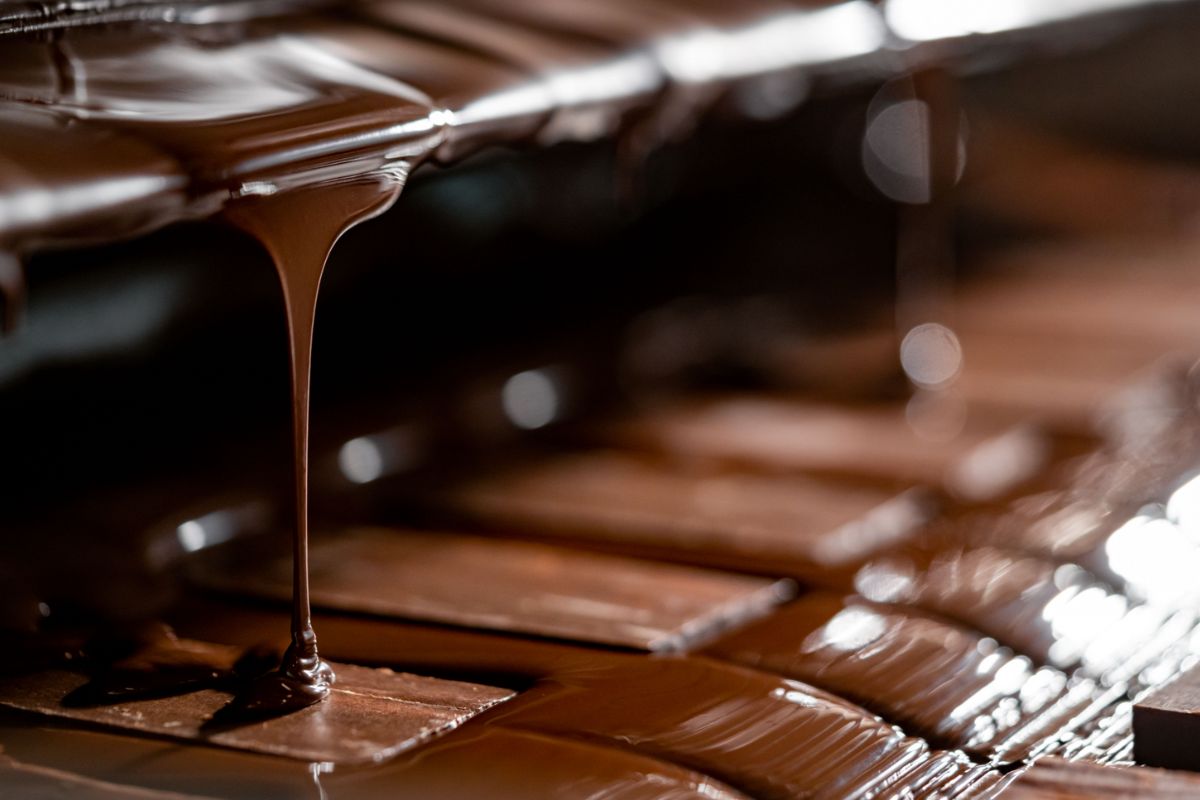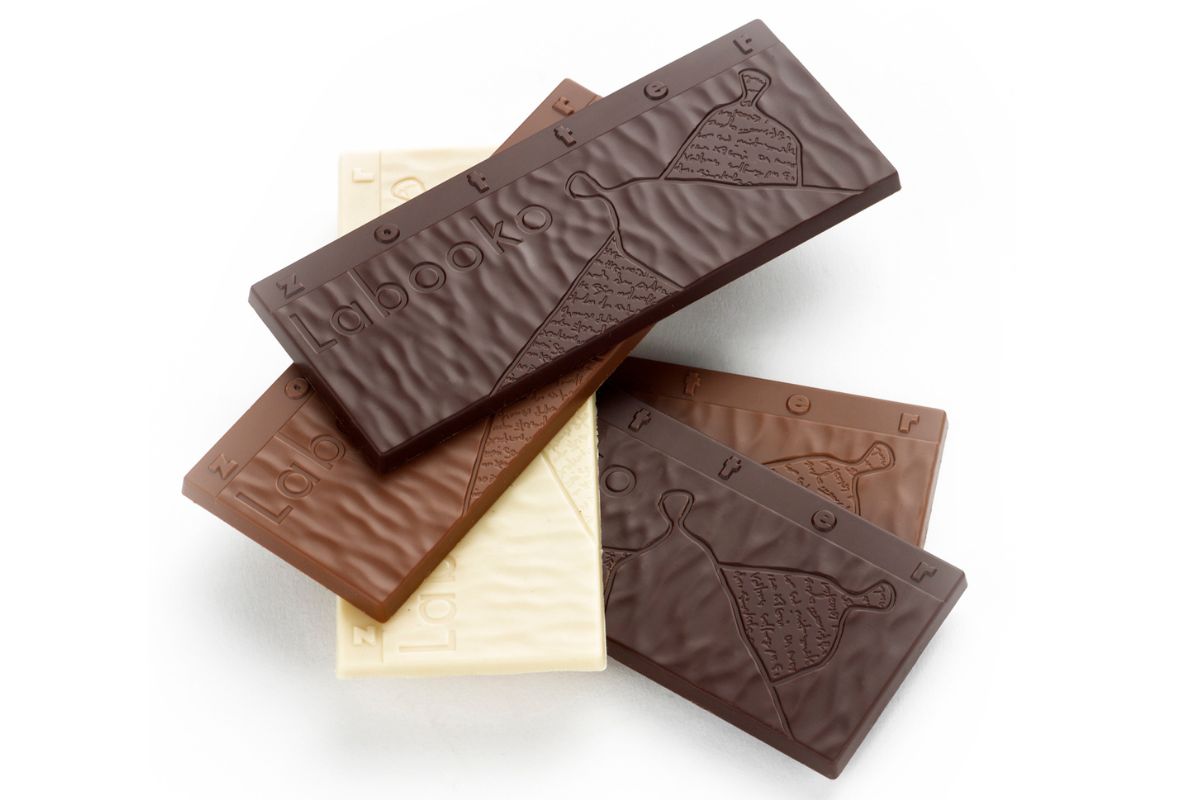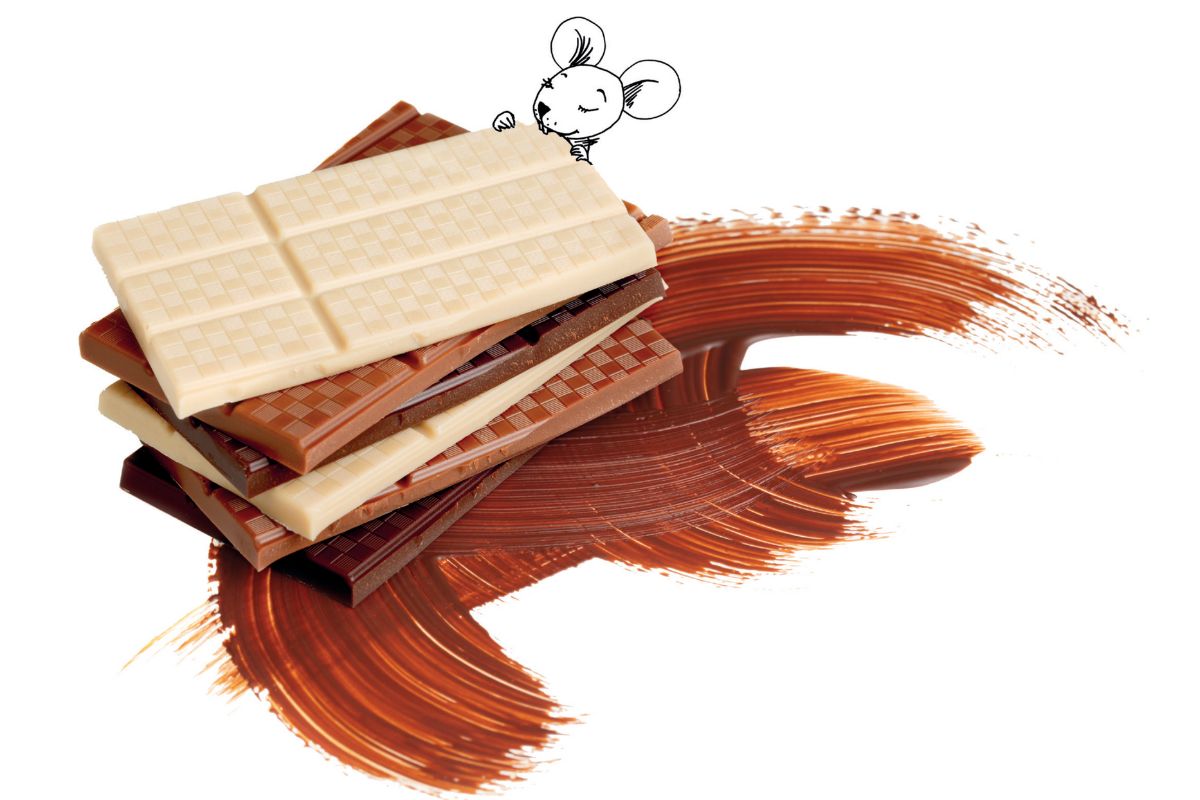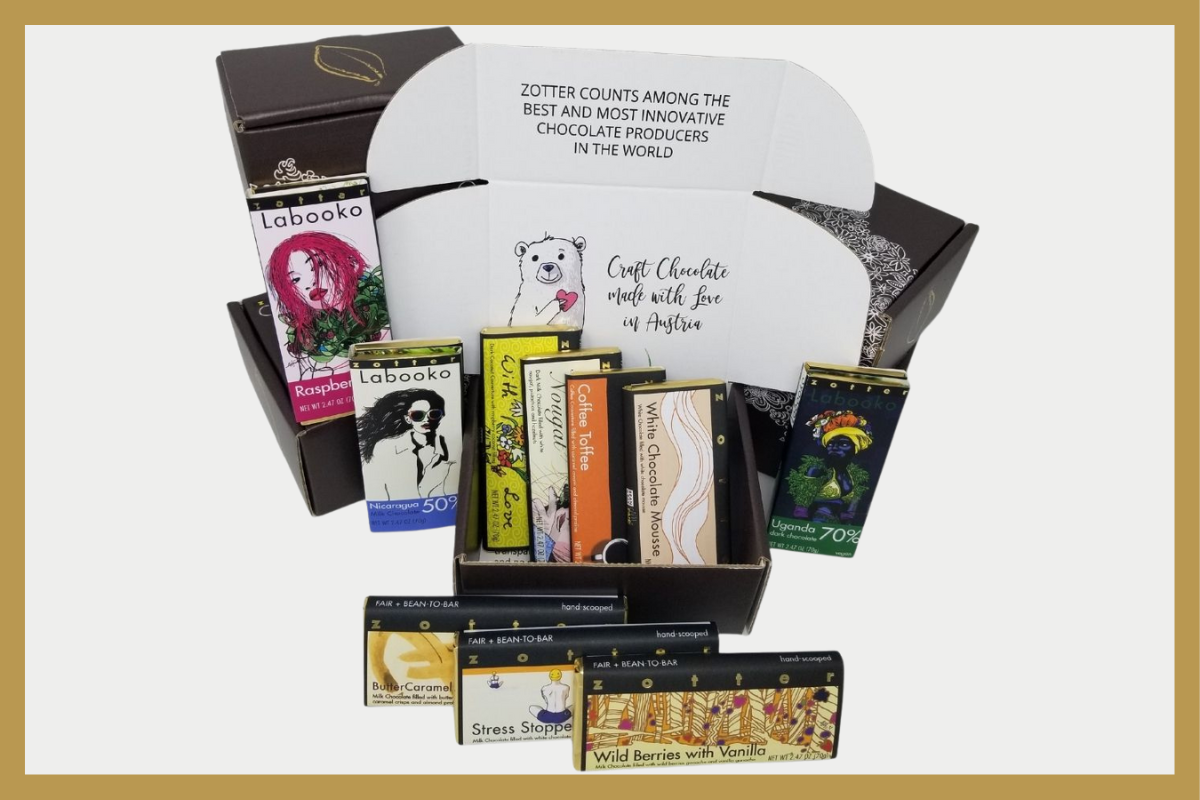Welcome to our exploration of chocolate bloom, a phenomenon that can affect the appearance of chocolate. Some people view it as a negative attribute, while others appreciate it as an indication of quality and craftsmanship. In this article, we will delve into the topic of chocolate bloom, examining its causes, effects, and impact on the taste of chocolate. We will also compare chocolate bloom to mold, address concerns about its safety, and provide practical tips for preventing it.
Chocolate is a beloved treat that comes in various forms, from milk and dark chocolate to white and specialty varieties. But what happens when chocolate starts to appear dull or discolored? That’s when chocolate bloom may be present. Chocolate bloom is a natural occurrence that happens when chocolate is exposed to certain conditions. It can alter the appearance of chocolate, but does it affect the taste? Read on to discover more about this fascinating characteristic of chocolate.
Key Takeaways:
- Chocolate bloom is a natural occurrence that affects the appearance of chocolate.
- Some people view chocolate bloom as a negative attribute, while others consider it a sign of quality and craftsmanship.
- Chocolate bloom can be caused by temperature fluctuations, fat migration, and improper storage conditions.
- Chocolate bloom can be differentiated from mold, and bloomed chocolate is safe to eat if stored properly.
- Chocolate bloom can be prevented by storing chocolate at the correct temperature and protecting it from moisture and heat.
Understanding Chocolate Bloom
Before we determine whether chocolate bloom is a bad thing, we need to understand what it is and how it affects chocolate. Chocolate bloom is a phenomenon that occurs when chocolate is exposed to temperature changes or moisture, causing changes in its appearance. There are two types of chocolate bloom – sugar bloom and fat bloom – and each has its own effects on the chocolate’s appearance and texture.
Sugar Bloom
Sugar bloom occurs when chocolate is exposed to moisture. The moisture dissolves the sugar in the chocolate, which then recrystallizes on the surface of the chocolate. This causes the chocolate to have a grainy texture and develop a white, powdery coating.
Fat Bloom
Fat bloom occurs when chocolate is stored at high temperatures or experiences fluctuations in temperature. The cocoa butter in the chocolate separates from the other ingredients and rises to the surface, creating a dull, greasy appearance. The chocolate’s texture may also become crumbly or soft.
In either case, while chocolate bloom may affect the appearance of the chocolate, it typically does not impact its flavor. However, if the chocolate has been stored in improper conditions or for too long, it may develop a rancid or stale taste.
So, while chocolate bloom may not be harmful, it is still important to understand what it is and how it affects chocolate. In the next section, we’ll delve into the causes of chocolate bloom and how to prevent it from occurring.

Causes of Chocolate Bloom
In order to understand what chocolate bloom is and its impact on chocolate, it is important to know what causes it. Chocolate bloom is a visual change that occurs on chocolate that is caused by several factors.
Temperature Fluctuations
Temperature fluctuations are one of the main causes of chocolate bloom. When chocolate is exposed to different temperatures, it can cause the cocoa butter to separate from the chocolate and rise to the surface, resulting in a whitish appearance on the chocolate.
Fat Migration
Another cause of chocolate bloom is fat migration. The fat in the chocolate moves to the surface of the chocolate due to the difference in temperature, which results in the whitish appearance on the surface of the chocolate.
Improper Storage Conditions
Chocolate should be stored in cool and dry conditions to avoid chocolate bloom. If chocolate is stored in an area with high humidity and temperature, the chocolate will be more susceptible to bloom. Improper storage conditions can also cause the chocolate to absorb odors and flavors from their surroundings, which can negatively affect the taste of the chocolate.
Understanding the causes of chocolate bloom can help prevent it from occurring, ensuring the chocolate retains its quality and appearance for a longer period of time.
The Appearance of Chocolate Bloom
Now that we understand what chocolate bloom is and its underlying causes, let’s take a closer look at how it affects the appearance of chocolate. When chocolate has bloomed, it develops a dull, whitish coating on its surface, which may give the impression of a chocolate gone bad. However, this is not necessarily the case. It’s crucial to note that chocolate bloom affects only the surface of the chocolate and not its entire structure.
There are two types of chocolate bloom: fat bloom and sugar bloom. Fat bloom occurs when the cocoa butter in the chocolate migrates to the surface, causing the dull white coating to form. Meanwhile, sugar bloom is caused by moisture that has crystallized on the surface, resulting in a grainy texture.
While chocolate bloom may not affect the taste of chocolate, it can impact its texture. Chocolate that has undergone fat bloom may have a softer, smoother texture, while sugar bloom may contribute to a grainy texture. However, these effects are usually subtle and not noticeable unless you’re an experienced chocolate connoisseur.
Does Chocolate Bloom Affect Taste?
Now that we understand what chocolate bloom is and its effect on the appearance of chocolate, the question remains: does chocolate bloom affect taste? The answer is not a straightforward one, as different people may perceive taste variations differently. However, some general observations can be made about the influence of chocolate bloom on taste.
In most cases, chocolate bloom does not affect the overall flavor of chocolate. This is because chocolate bloom only affects the surface of the chocolate and does not penetrate deep into the chocolate. As we mentioned earlier, there are two types of chocolate bloom: fat bloom and sugar bloom. Fat bloom is the most common type of bloom and is caused by fat migration. It appears as a white or grayish layer on the surface of the chocolate. Sugar bloom occurs when moisture comes in contact with sugar in the chocolate and forms crystals on the surface. It has a similar appearance to fat bloom but is more granular.
The presence of chocolate bloom can cause a change in texture, making the chocolate appear grainy or gritty. Some people may find this texture unpleasant, but it does not necessarily affect the taste of the chocolate. However, if chocolate has been exposed to high temperatures or humidity for an extended period, it can undergo additional changes that may negatively impact taste. In such cases, the chocolate may become rancid or develop an off-flavor, which is not related to chocolate bloom.
Therefore, to summarize, chocolate bloom does not typically affect the taste of chocolate. However, if chocolate bloom is present along with other storage-related issues, such as exposure to heat and humidity, it can lead to flavor changes that are not desirable.
Chocolate Bloom vs. Mold: Understanding the Differences
At first glance, chocolate bloom and mold may appear to be similar on the surface. They both involve a whitish coating on the chocolate’s surface, and this can cause some confusion. However, there are specific differences between the two that we need to understand.
The primary difference between chocolate bloom and mold is that chocolate bloom is a result of changes in temperature while mold is a result of fungal growth. Chocolate bloom is not harmful and does not produce the fuzzy spots commonly associated with mold growth.
If you’re still unsure whether the white substance on your chocolate is chocolate bloom or mold, there are several visible differences. Chocolate bloom appears as a dull white film, while mold appears as fluffy, spotty, and clearly differentiated from the rest of the chocolate’s surface.
It’s also important to note that chocolate that has bloomed is still safe to eat, while moldy chocolate should be thrown away. Moldy food products can cause food poisoning if consumed, and chocolate is no exception.
Is Chocolate Bloom Safe to Eat?
One of the most pressing concerns for many chocolate lovers is whether chocolate bloom affects the safety of consuming the chocolate. The good news is that chocolate bloom is not harmful and is safe to eat, as long as proper storage conditions have been followed.
Chocolate bloom is a visual defect that occurs on the surface of chocolate and does not change the chemical composition of the chocolate or make it unsafe to eat. In fact, chocolate bloom is a natural occurrence that is an indication of the cocoa butter rising to the surface of the chocolate, which is a sign that the chocolate is of high quality.
However, it is important to note that if the chocolate has been stored in conditions that promote the growth of mold or bacteria, it may not be safe to eat. If the chocolate has a musty or off-putting scent, it may be a sign of spoilage and should not be consumed.
So, to answer the question of whether chocolate bloom is safe to eat, the answer is yes, as long as proper storage practices have been followed and there are no other indications of spoilage or contamination.
Preventing Chocolate Bloom
Preventing chocolate bloom is essential to ensure the longevity of your chocolate’s flavor and texture. Below are some practical tips on how to prevent chocolate bloom:
- Store chocolate at the correct temperature: Chocolate should be stored between 65-70°F (18-21°C), in a cool, dry place away from direct sunlight. Avoid storing chocolate in the refrigerator or freezer as rapid temperature fluctuations can cause chocolate bloom.
- Protect chocolate from moisture: Moisture is a catalyst for chocolate bloom, so it’s essential to keep chocolate dry. Store chocolate in airtight containers or wrapping to protect it from moisture intrusion.
- Avoid exposing chocolate to heat: Heat accelerates chocolate bloom, so avoid leaving chocolate in a warm environment for extended periods. If transporting chocolate, ensure it is kept cool, dry and in a well-insulated container.
- Practice proper tempering techniques: Properly tempered chocolate is less likely to develop bloom. Learn how to temper chocolate correctly and with consistency, and avoid over-churning the chocolate, which can lead to overheating and bloom.
By applying these simple tips, you can avoid the onset of chocolate bloom and preserve your chocolate’s quality and taste for longer.
The Art of Fine Chocolate
When it comes to fine chocolate, it’s not just about the taste, but the artistry and craftsmanship that goes into its creation. From sourcing the highest quality cocoa beans to skillfully roasting and refining them, fine chocolate is a labor of love that requires precision and expertise.
There are countless chocolate makers around the world who dedicate their lives to perfecting this craft. They experiment with different blends of cocoa beans, varying roasting times and temperatures, and unique flavor infusions to create exquisite chocolate creations.
When it comes to chocolate bloom, it is considered part of the beauty of fine chocolate. While it may alter the appearance slightly, it does not necessarily affect the flavor or quality of the chocolate. In fact, some chocolate enthusiasts even seek out bloomed chocolate for its distinctive character.
As part of the art of fine chocolate, chocolatiers often incorporate chocolate bloom intentionally into their creations. Whether it’s to create a visually striking design or to add a unique texture to their chocolate, this phenomenon is embraced and celebrated in the world of fine chocolate.
Overall, fine chocolate is a testament to the dedication and passion of those who create it. It’s an experience that transcends the taste buds and engages all the senses. From the beautiful appearance of the chocolate to the complex flavors and textures, fine chocolate is truly a work of art.

Appreciating the Complexity of Chocolate Bloom
Rather than being a cause for concern, chocolate bloom can add an extra layer of complexity to this beloved treat. The effects of chocolate bloom can vary depending on the type of bloom, but even the dull, whitish coating on the surface can give chocolate a unique visual appeal and texture.
In fact, some chocolate makers intentionally induce chocolate bloom as part of the creative process, resulting in a distinctive appearance and taste. For those who appreciate the craftsmanship behind fine chocolate, chocolate bloom is another element to be admired, rather than feared.
While chocolate bloom can indicate that the chocolate has been exposed to less-than-ideal conditions, such as temperature fluctuations or improper storage, it does not necessarily mean that the chocolate is unsafe to eat. As described in earlier sections, as long as the chocolate has not been contaminated with mold or other harmful substances, it is perfectly safe to consume.
Rather than viewing chocolate bloom as a negative characteristic, it can be celebrated as an aspect of the intricate and fascinating world of chocolate. By appreciating the complexities of chocolate bloom, we can gain a deeper understanding of the nuances that make chocolate such a beloved and intriguing food.
Conclusion
In conclusion, we hope this article has shed light on the subject of chocolate bloom and whether it is considered a negative attribute. We have explored the different types of chocolate bloom and what causes it, as well as discussed its impact on the appearance and taste of chocolate.
We have also compared chocolate bloom to mold, highlighting the distinctions between the two and addressing any concerns about consuming bloomed chocolate. Additionally, we have reassured readers about the safety of consuming bloomed chocolate, as long as it has been stored properly.
While chocolate bloom may not be harmful, it can be avoided by implementing proper storage practices. We have provided practical tips on how to prevent chocolate bloom, including storing chocolate at the correct temperature and protecting it from moisture and heat.
Understanding chocolate bloom enables us to appreciate the art of fine chocolate and enjoy its flavorful experience, even when bloom is present. Rather than viewing chocolate bloom as a detriment, it can be appreciated as an intriguing dimension of chocolate that adds to the uniqueness and character of certain chocolate creations.

Types of Chocolate Bloom
There are two types of chocolate bloom, fat bloom, and sugar bloom. Fat bloom is caused by the migration of fat molecules to the surface of the chocolate, resulting in a dull, whitish appearance. Sugar bloom, on the other hand, occurs when moisture causes the sugar in the chocolate to dissolve and then recrystallize on the surface, resulting in a grainy texture.
Is Chocolate Bloom a Bad Thing?
Chocolate bloom is not considered a bad thing in and of itself. While it may affect the appearance of chocolate, it does not necessarily impact its taste or safety. In fact, some chocolate connoisseurs appreciate chocolate bloom as a sign of craftsmanship and artistry behind creating premium chocolate.
Is Chocolate Bloom Safe?
Bloomed chocolate is safe to eat as long as it has been stored properly. However, if the chocolate has been exposed to moisture or extreme temperatures, it may be subject to bacterial growth or rancidity, which can affect its safety. It’s always important to check for any signs of spoilage before consuming any chocolate product.
FAQ
Is chocolate bloom a bad thing?
Chocolate bloom is not inherently a bad thing. It is a natural occurrence in chocolate and does not affect its safety or edibility. However, it can impact the appearance of chocolate and may result in a slightly different texture.
What is chocolate bloom?
Chocolate bloom refers to the whitish, dull coating that can appear on the surface of chocolate. It is caused by the migration of fat or the formation of sugar crystals on the chocolate’s surface.
Does chocolate bloom affect the taste of chocolate?
Chocolate bloom may have a slight impact on the taste of chocolate. Some people find that bloomed chocolate has a different texture or mouthfeel compared to non-bloomed chocolate. However, the flavor of the chocolate usually remains relatively unchanged.
How can chocolate bloom be prevented?
Chocolate bloom can be prevented by storing chocolate properly. It is recommended to store chocolate in a cool, dry place, away from direct sunlight and strong odors. Avoid exposing chocolate to temperature fluctuations and moisture, as these can contribute to the formation of bloom.
Is chocolate bloom safe to eat?
Yes, chocolate bloom is safe to eat. It is not mold or any form of contamination. It is simply a cosmetic change that occurs naturally in chocolate. As long as the chocolate has been stored properly and is within its expiration date, it is safe to consume.
How can I differentiate between chocolate bloom and mold?
Chocolate bloom and mold can have similar visual characteristics, but there are distinct differences between the two. Chocolate bloom is typically a whitish, dull coating that can be wiped off, while mold often appears fuzzy or spotty and cannot be removed easily. Additionally, mold usually has a distinct odor, while chocolate bloom does not.


